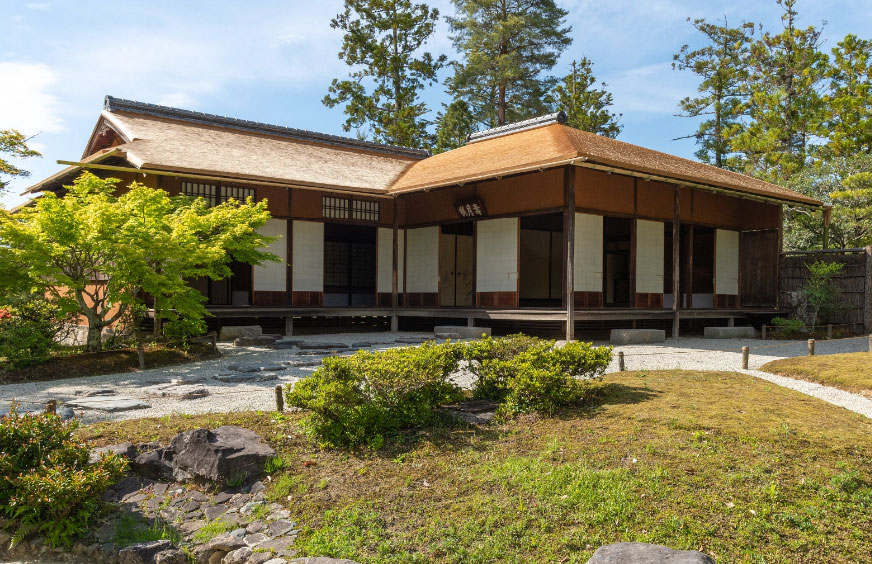Introduction: Serene Beauty of a Royal Garden
Shugakuin Imperial Villa (修学院離宮, Shugakuin Rikyū) is a breathtaking imperial retreat on the outskirts of Kyoto, built in the 17th century and now managed by the Imperial Household Agency. This garden complex, consisting of Upper, Middle, and Lower Villa areas, perfectly showcases the harmony between traditional imperial architecture and natural landscapes. This article will provide you with a detailed guide to the history, highlights, and visiting information for this hidden gem of Kyoto.
Key Information Points
- Location: Shugakuin, Sakyo-ku, Kyoto
- Construction period: 1655 to 1659
- Managing authority: Imperial Household Agency
- Visiting method: Guided tours only (reservation required)
- Main features: Traditional imperial architecture, exquisite garden landscapes
Rich History, Imperial Heritage
The name Shugakuin comes from a temple that once stood on the same site in the 10th century. The current imperial villa was constructed between 1655 and 1659 by Emperor Gomizuno, with a palace for his daughter added ten years later. In 1964, the surrounding farmlands were acquired by the Imperial Household Agency, though local farmers continue to work the fields, preserving the area’s agricultural tradition.
Main Attractions Overview
Upper Villa (Kami-ochaya)
The Upper Villa is the highest point of Shugakuin, with garden designs that cleverly incorporate the surrounding mountain scenery. The main building, “Rinuntei,” offers an excellent vantage point for viewing Kyoto’s cityscape, especially stunning during the autumn foliage season.
Middle Villa (Naka-ochaya)
The Middle Villa is renowned for its meticulously designed dry landscape garden, showcasing the essence of traditional Japanese garden art. The buildings here blend seamlessly with the natural landscape, creating a serene and harmonious atmosphere.
Lower Villa (Shimo-ochaya)
The Lower Villa features a large artificial lake called “Yokuryuchi” (Carp Fish Pond) as its centerpiece. The teahouses and pavilions along the shore create a picturesque scene, making this the most poetic area of the entire complex.
Best Time to Visit
Shugakuin Imperial Villa is beautiful year-round, but autumn (October to November) and spring (March to April) are particularly spectacular. Autumn offers a perfect combination of fall foliage and garden landscapes, while spring brings the romantic atmosphere of cherry blossoms.
Transportation Guide
From Kyoto Station:
- Take the JR Nara Line to Tofukuji Station (about 3 minutes)
- Transfer to the Keihan Main Line to Demachiyanagi Station (terminus, about 10 minutes)
- Take the Eizan Railway to Shugakuin Station (about 7 minutes)
- Walk 10-15 minutes from Shugakuin Station to the villa entrance
Total journey time is about 40 minutes and costs 650 yen.
Opening Hours and Admission Information
- Opening hours: Multiple guided tours daily (Closed on Mondays, or the following day if Monday falls on a national holiday)
- Admission: Free, but advance reservation is required
- Reservation methods:
- Apply in person at the Imperial Household Agency’s Kyoto office in Kyoto Imperial Palace (bring your passport)
- Online reservation through the Imperial Household Agency’s website (limited spots, must be completed several days in advance)
- Limited same-day tickets distributed at Shugakuin Imperial Villa (from 11:00 AM, first-come, first-served basis)
Visitor Tips and Advice
- The guided tour lasts about 80 minutes; wear comfortable walking shoes
- Tours are conducted in Japanese, but audio guides in several languages are available
- Entry into buildings is not permitted, but interiors can be viewed from outside
- Photography may be restricted; follow staff instructions
- Reservations 1-2 weeks in advance are recommended, especially during peak tourist seasons
Official Website
- Imperial Household Agency (English): Imperial Household Agency
- Online reservation page (English): Application for Visit
Conclusion: Timeless Elegance, Imperial Grace
Shugakuin Imperial Villa stands as an outstanding example of Japanese imperial garden art, attracting visitors from around the world with its exquisite landscape design and rich historical significance. Whether you’re an enthusiast of traditional Japanese culture or a traveler seeking Kyoto’s hidden scenic spots, Shugakuin Imperial Villa is well worth a visit. Book a guided tour and immerse yourself in this tranquil royal garden, where time seems to stand still, allowing you to experience the essence of Japanese culture. Don’t miss this opportunity to explore one of Kyoto’s most elegant and historically significant sites.
